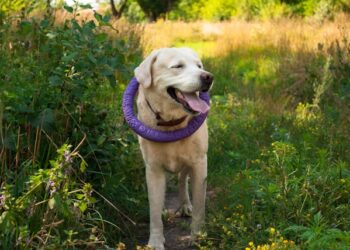Socializing your dog is one of the most important steps in raising a well-behaved and confident pet. Proper socialization helps prevent behavioral issues such as fear, aggression, and anxiety while ensuring that your dog feels comfortable in different environments. Whether you have a young puppy or an older rescue dog, learning how to socialize your dog the right way will set them up for a lifetime of positive interactions.
When to Start Socializing Your Dog
The ideal time to start socialization is during puppyhood, between 3 to 16 weeks of age. This is when puppies are most receptive to new experiences and learn to form positive associations with different people, places, and situations. However, if you have an older dog that missed early socialization, don’t worry it’s still possible to introduce them to new experiences with patience and positive reinforcement.
For adult dogs, socialization should be a gradual process. Expose them to new environments, unfamiliar people, and other dogs in a controlled and stress-free manner. Consistency and patience are key when working with an unsocialized adult dog.
Best Ways to Socialize Your Dog
1. Introduce New Environments
Expose your dog to different locations such as parks, pet-friendly cafes, and busy streets. This helps them get used to various sights, sounds, and smells, reducing the chances of fear-based reactions.
2. Positive Interactions with People and Dogs
Allow your dog to meet a variety of people, including children, men, and people wearing hats or sunglasses. Arrange playdates with other friendly dogs to help them develop good canine social skills.
3. Exposure to Different Sounds and Surfaces
Dogs should be gradually exposed to household noises like vacuum cleaners, doorbells, and car horns. Walking on different surfaces such as grass, pavement, sand, and wood flooring will help your dog feel confident in various settings.
4. Use Positive Reinforcement
Reward your dog with treats, praise, and affection when they exhibit calm and confident behavior. This reinforces positive associations with new experiences and prevents anxiety.
5. Enroll in Puppy or Obedience Classes
Professional training classes offer a structured way to introduce your dog to new situations and teach them proper behavior. These classes also allow for supervised socialization with other dogs.
Common Socialization Challenges & How to Overcome Them
Fearful or Anxious Dogs
Some dogs may react fearfully to new situations. If your dog is hesitant, avoid forcing interactions. Instead, introduce new experiences gradually and at their own pace. Use high-value treats and encouragement to build confidence.
Aggression Towards Other Dogs or Strangers
If your dog shows aggression, it may be due to past trauma or a lack of early socialization. In such cases, work with a professional dog trainer or behaviorist to address the issue safely.
Overexcitement or Hyperactivity
Some dogs get overly excited during interactions, which can lead to jumping or rough play. Training basic obedience commands such as “sit,” “stay,” and “leave it” can help manage their excitement.
Mistakes to Avoid
1. Rushing the Process
Socialization should be a gradual experience. Introducing too many new things at once can overwhelm your dog and cause fear rather than confidence.
2. Forcing Interactions
If your dog seems uncomfortable, don’t force them into a situation. Instead, allow them to approach new experiences at their own pace.
3. Neglecting Continued Socialization
Socialization isn’t just for puppies—it should be an ongoing process throughout your dog’s life. Regular exposure to new people, animals, and environments helps maintain positive behavior.
Conclusion
Socializing your dog properly is essential for their well-being and happiness. Whether you’re working with a young puppy or an older dog, the key is to introduce them to new experiences gradually, using positive reinforcement. Avoid common mistakes, be patient, and celebrate small progress.





